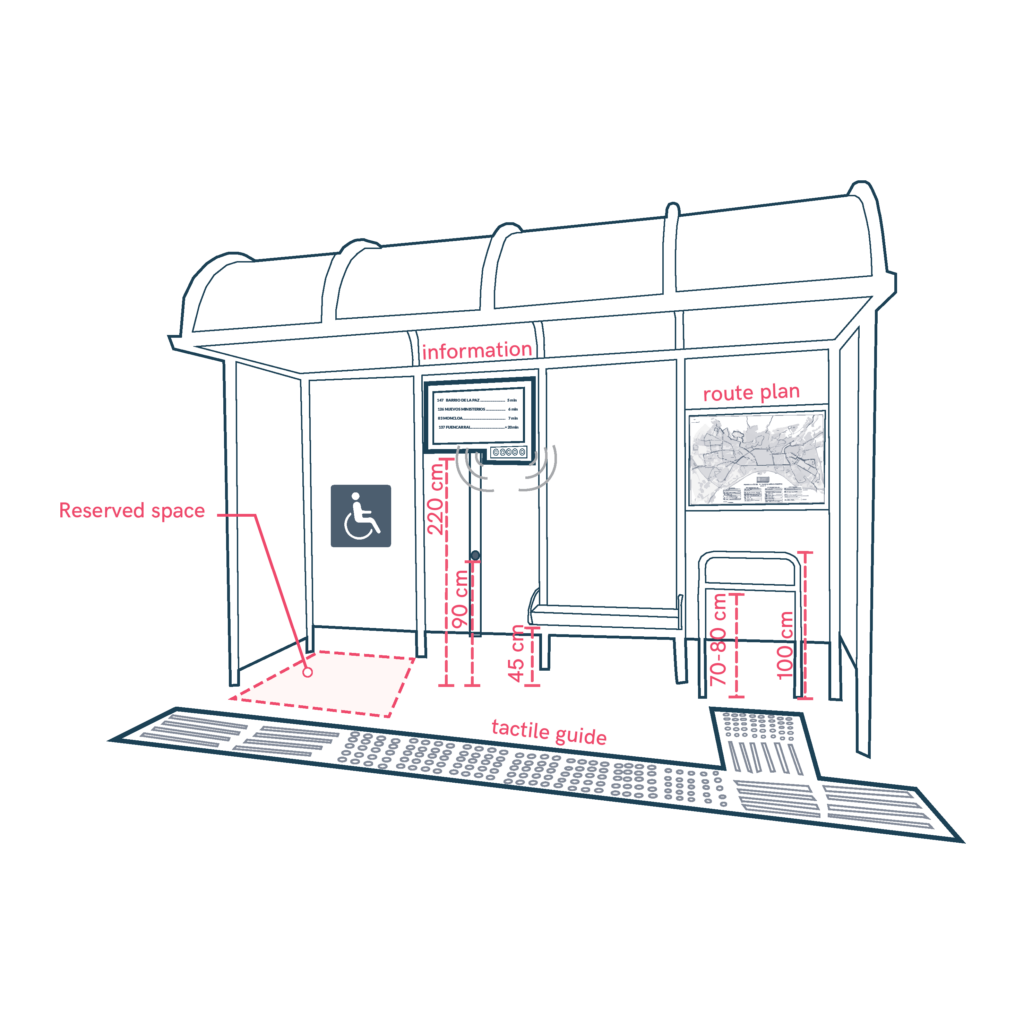Bus Stop Design
Bus stops are the first point of contact for passengers using public transportation, making their design essential in creating an inclusive and accessible environment for all. Ensuring bus stops are spacious, clearly marked, and well-protected from the elements creates a safe, welcoming space for people with disabilities. Key features such as tactile paving, adequate seating, and visible information about routes and wait times help guide passengers, including those with visual impairments. By integrating these elements, bus stops can be both functional and accessible, offering a seamless transition to public transport.

- Ensure bus stops are spacious and offer seating capacity, including space for wheelchairs.
- Protect bus stops from sun and rain, ensuring clear visibility.
- Provide information on bus routes and waiting times, and offer audible information (if requested) alongside display screens.
- Incorporate tactile paving and provide maps to help with city orientation.
Sources
- https://accessible-eu-centre.ec.europa.eu/content-corner/digital-library/en-172102021-accessibility-and-usability-built-environment-functional-requirements_en
- https://www.iso.org/standard/71860.html
- https://www.t-l.ch/collectivites/guide-des-amenagements-pour-les-transports-publics-routiers-tl/
- https://www.leitfadenbarrierefreiesbauen.de/fileadmin/downloads/archiv/barrierefreies_bauen_leitfaden_en_bf_version2.pdf
- https://www.vitoria-gasteiz.org/http/wb021/contenidosEstaticos/especial/cea/20190917/Avance_PMSEP_2020_2030.pdf
- https://www.punt6.org/es/books/espacios-para-la-vida-cotidiana/
- Carers
- Children
- Cognitive
- Cognitive abilities
- Decolonial perspective
- Digital
- Digital barrier
- Enviroment
- Environmental
- Gender and generations
- Gender perspective
- Hearing impairment
- Low-education
- Low-income
- Older people
- Other
- Physical abilities and features
- Sensory and Physical
- Socioeconomic
- Visual impairment